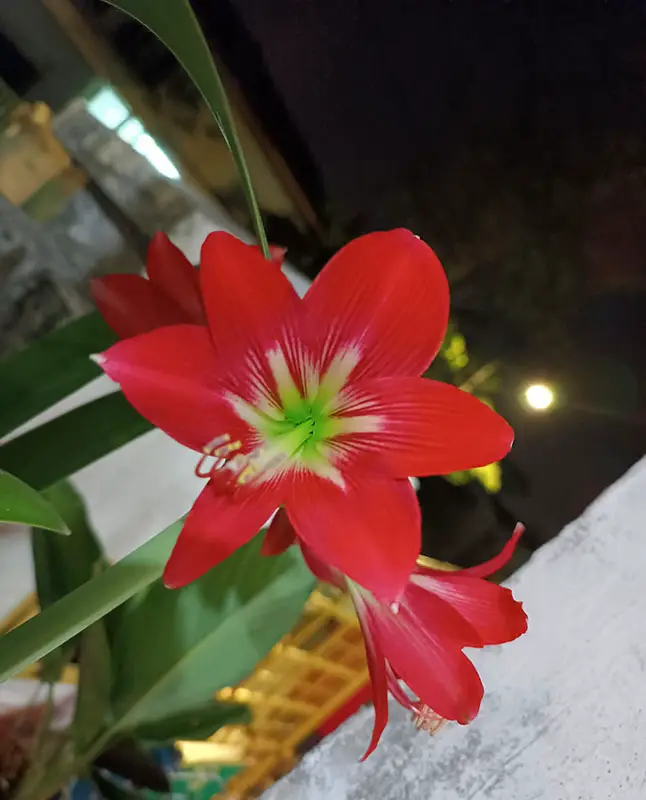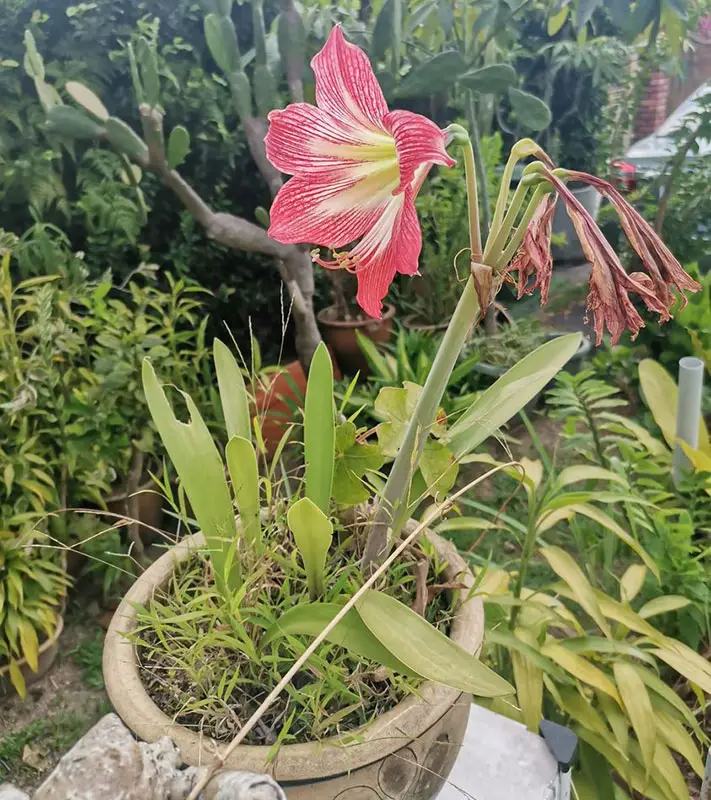Daffodils are beautiful flowers that bring a cheerful touch to any garden or home. After the daffodil blooms, it’s important to take care of them properly so they can continue to bloom again in the years ahead.
Now, we are going to cover what you need to do after your daffodils have finished flowering, from leaving them in the ground to dividing overgrown plants and caring for the foliage. We’ll also answer some commonly asked questions such as ‘Do you cut back daffodils after they bloom?’ and ‘How do you get daffodils to bloom again?’.
Finally, we’ll discuss how best to look after daffodils in pots and what plants can be planted once your daffodils die off.
Leave Them In The Ground
Don’t let those beautiful blooms go to waste – leave them in the ground.
Daffodils, or Narcissus, are perennials that come back year after year. After their beautiful flowers have withered away, it’s best to leave the foliage in place until it turns yellow and dies back naturally. This will allow the bulb to store energy and nutrients for the next season’s growth.
Leaving the leaves intact also prevents algae and fungus from growing on the bulb. If you don’t want your daffodil plants to crowd out other plants around them, you can trim off some of the foliage when it has died back. This will help keep your garden looking tidy while still providing food for the bulbs.
With proper care, you can look forward to a new show of daffodil flowers every spring. And as an added bonus, many daffodils are fragrant so you can enjoy their sweet scent all season long.
To ensure that your daffodils stay healthy and vibrant for years to come, remember: leave them in the ground.
Dividing Overgrown Plants
Got an overgrown daffodil plant? Don’t worry, we’ll show you how to divide it. With a little bit of know-how and patience, you can have your garden looking lush again.
Dividing daffodils is best done in the early fall when the leaves are still green and actively growing. To begin, use a shovel or pitchfork to loosen up the soil around the clump of bulbs. Gently dig out as many bulbs as possible without damaging them. You may need to separate any connected roots by hand. Once divided, replant each bulb at least three inches deep in its new location – with plenty of space between them for optimal growth. The newly planted bulbs will be put on a beautiful display next spring.
Now that you’ve divided your plant, don’t forget about foliage care. Foliage should be left alone until it dies back naturally in late summer or early fall; this allows energy from photosynthesis to feed the bulb reserves for future blooming seasons.
Foliage Care
Nurturing the foliage after dividing your daffodils is essential to ensure a vibrant bloom for years to come, so treat it like a beloved friend. To keep the foliage healthy and thriving, you should:
- Water your daffodil plants regularly, making sure that they get at least 1 inch of water per week.
- Feed your plants with fertilizer every month or two during the growing season. Choose a fertilizer that’s specifically designed for bulbs.
- Remove any dead or diseased leaves from the plant as soon as possible to help prevent further spread of disease.
- Ensure that the soil around your plants remains well-drained and aerated; that’ll encourage strong root growth and promote healthy foliage growth.
Cut Back Daffodils After They Bloom
Once the blooms have faded, it’s time to start thinking about trimming back your daffodils. Cutting back the foliage after flowering will help ensure the bulbs will get enough energy to grow and bloom again next year. If you don’t cut them back, then the plant can suffer from a lack of nutrients and may not produce any flowers at all.
Depending on how many plants you have, this process can take anywhere from a few minutes to an hour or more. It’s important to remove any dead or wilted leaves that remain after blooming, as these can attract diseases and pests. Make sure to use sharp pruning shears so as not to damage the stem or bulb.
After cutting back your daffodil foliage, dispose of it in a compost bin or green waste bin instead of throwing it away – this way you’re helping reduce waste while providing beneficial nutrients for your garden. Allowing some foliage to remain is also beneficial for next season’s flower production.
Do Daffodils Bloom More Than Once?
Daffodils are known for their vibrant blooms, but did you know they can put on quite a show more than once each season? Depending on the variety and growing conditions, some daffodil flowers will rebloom in the same season as long as the old flower head is removed.
This process, known as deadheading, encourages more flowering by removing spent blossoms. Without deadheading, daffodils may not produce any additional blooms during that cycle.
However, with proper care and attention to detail, gardeners can enjoy multiple rounds of spectacular color from their beloved bulbs throughout the spring months. With this approach to pruning and caretaking, daffodils can be a beautiful addition to any outdoor space year after year.
What Happens If You Don’t Deadhead Daffodils?
If you don’t deadhead your daffodils, they won’t put on a second show of glorious blooms later in the season. Not deadheading your daffodils will have some unintended consequences:
- It can reduce the size and number of flowers in subsequent blooming.
- The bulb will expend energy forming seed heads instead of growing bigger bulbs for larger blooms next year.
- There may be fewer flowering stems as the energy from the bulb is concentrated into producing seeds instead of more flowers.
- You may end up with an unruly garden if you don’t remove spent flowers.
- Daffodil leaves can become unsightly when they start to yellow and die back.
- Uncut foliage can also harbor fungal diseases that spread to other plants.
- Deadheading helps keep pests at bay.
- Without regular pruning, aphids and slugs can set up shop on the drooping foliage and flower stalks.
- Regularly cutting back deadheads helps ensure that these pests are removed before they multiply.
How To Maintain Daffodils?
Now that you know the consequences of not deadheading your daffodils, it’s also important to know how to maintain them.
To ensure that your daffodils look their best and bloom year after year, there are some necessary steps you need to take.
First and foremost, make sure you give your daffodils plenty of sunlight and water. Plant them in a spot with about six hours of sunlight per day to help ensure they thrive.
Make sure the soil around the bulbs stays moist. If it’s too dry, the flowers won’t be as vibrant when they bloom.
Adding a layer of mulch or compost can help keep moisture in the soil and protect against weeds competing for resources.
Fertilizing every few months during active growth periods can help keep your plants full of nutrients and looking their best.
Should You Tie Daffodils After Flowering?
Once your daffodils have finished blooming, you’ll want to consider tying them for a more aesthetically pleasing look. It’s important to take care when doing this, as the stems of daffodils are quite delicate and can easily be damaged.
Start by gathering some soft material such as string or twine. You’ll also need something to anchor the bundle, such as a stake in the ground or a trellis. Gently bunch the flower heads together and use the twine or string to tie them off tightly. This will help keep their shape and give your garden an organized appearance.
Be sure not to tie too tightly, however, as this could hinder circulation and prevent new growth from taking place. With just a bit of effort, you can make your daffodils look neat and tidy after flowering is complete.
How To Get Daffodils To Bloom Again?
Getting your daffodils to bloom again is a breeze – all you have to do is give them the right care.
Adding compost or fertilizer to the soil, along with regular watering and adequate light will help ensure daffodils come back year after year.
If you have just planted bulbs, make sure that you cover them well with soil and mulch so they’re not exposed to cold winter temperatures.
With proper care, most daffodils will return each spring for many years. For an extra boost of blooms, divide and replant any clumps of bulbs every few years as that’ll help keep the plants healthy and vigorous.
Will Blind Daffodils Flower Again?
Blind daffodils may never flower again, but with proper care, they can put on an absolutely breathtaking show every spring – one that’s almost too beautiful for words. Although they aren’t able to receive sunlight, blind daffodils can still be nurtured and looked after in order to produce a vibrant display.
As long as the soil is well-draining and they are watered regularly during the growing season, they should still be able to bloom come springtime. To ensure their success, it’s important to make sure that the plants get plenty of nutrients through regular fertilizing – this will help them stay strong and healthy until it comes time for them to bloom.
With these simple steps in place, you’ll have a stunning display of colorful blooms each year from your blind daffodils. Looking after daffodils in pots requires extra effort but with diligence and patience, you’ll be rewarded with a wonderful sight come springtime.
How To Look After Daffodils In Pots?
You can help your daffodils flourish in pots with just a little bit of love and care. Make sure to provide them with plenty of nutrients to keep them strong, water regularly throughout the season, and you’ll be rewarded with a beautiful display come springtime.
To ensure that your daffodils thrive in pots, give them plenty of sunlight. Choose a spot for your potted daffodil that gets at least six hours of direct sunlight each day. If this isn’t possible, supplement their diet with artificial lighting.
Fertilize them regularly by feeding your daffodils every two weeks using a balanced fertilizer such as 10-10-10. This will help provide essential nutrients and promote healthy growth.
Water efficiently, as daffodils need regular watering, but make sure not to overwater them or leave them sitting in soggy soil for too long. To avoid this, use shallow containers or place stones at the bottom of the pot before adding soil and plants so excess moisture can escape more easily.
What To Plant After Daffodils Die?
Once the daffodils have finished their stunningly spectacular bloom, it’s time to get ready for the next show-stopping flower.
Planting something else after the daffodils die will ensure you can keep your pots looking great all year round.
There are lots of options when it comes to what to plant in place of the daffodils. Depending on your climate, you could try planting some perennial plants like daisies, hollyhocks, and primrose. They’ll come back each year with little effort from you.
Alternatively, if you want a quick change or live in a temperate climate then annuals like petunias, marigolds, and geraniums are an excellent choice. They don’t need as much maintenance as perennials and will provide bright colors that last until fall.
Final Thoughts
Now that you know what to do with your daffodils after they’ve bloomed, you’ll be able to keep them looking beautiful for years to come.
Think of them as a metaphor for life – the flowers may fade but their beauty will live on in your memories forever.
The time and effort you put into caring for them can bring joy and pleasure throughout the seasons, just like investing in relationships or hobbies does.
So go ahead and enjoy the brilliant blooms of your daffodils.


